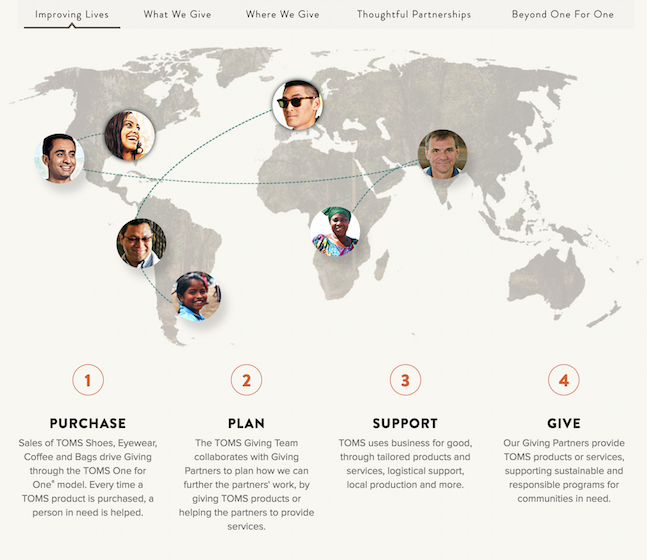Eight seconds. Not eight minutes, eight seconds.
To put this in perspective, “We now have a shorter attention span than goldfish,” according to recent media consumption study conducted by Microsoft. “Goldfish, meanwhile, are believed to have an attention span of nine seconds.” Essentially, humans are more distractible than low-maintenance pets that spend their days swimming in endless circles.
In an information-overload-age-of-smartphones world that constantly diverts the attention of the highly distractible, is it possible for one business — your business — to stand out from the rest? Furthermore, can you inspire brand loyalty in times like these?
Thankfully, the answer is yes.
Big companies like Amazon, as well as emerging companies like Uber, have been able to accomplish this tremendous feat using very simple practices, and you can too.
It’s time to construct a strong and faithful customer base. Start with these five building blocks of brand loyalty.
1. Accessibility
Advertisements pepper our media consumption experiences across all devices. You can’t just exist to stay competitive anymore – you have to interact and engage. One way to do that is to make your brand accessible to the masses through social media.
Amazon.com provides a prime example of customer accessibility. The e-commerce giant offers copious coupons to encourage sales via Facebook, allows customers to reply with #AmazonCart to product features on Twitter (automatically placing a product in their Amazon shopping cart), and promotes aesthetically pleasing product images in Pinterest.

You may be thinking, well of course Amazon could do that … they have tons of marketing dollars at their disposal. However, the real key to making your brand accessible via social media is creativity — strategic use of hashtags is a good place to start. Test and optimize what works best.
2. Insight
You don’t have to be a mind reader to know what people are looking for in a brand. To be insightful about what people want, you have to understand what people need and what they would be willing to pay for it.
Uber’s success is largely due to the fact that they recognized people like car transport (as opposed to taking the bus, walking, etc.), but appreciate convenience and accessible luxury.
By allowing customers to book rides easily and pay with a convenient smartphone app, Uber has revolutionized transit. But the company’s considerable insight doesn’t stop there; they ran a delightfully creative ‘UberKittens‘ campaign on National Cat Day which allowed customers to have kittens delivered right to their office for 15 minutes of kitten playtime at $30 per delivery.

Presumably, you’ve already created a compelling product, but it’s never too late to rethink your angle. Discover what your customers are looking for, then promote it in ways that will steer them towards your brand.
3. Excellence
This may seem obvious, but to build brand loyalty, you have to make good stuff. People are never going to be loyal to a brand that produces crappy stuff. On the flip side, if your product is quality with a capital “Q”, your customers will love you for it, tell their friends, and keep coming back for more.
Apple understands this concept better than most companies. For instance, I dragged myself out of bed to stand in line at 6:30 AM, waiting in eager anticipation for the release of the new iPhone 7. A guy in front of me had been there since 4:30 AM – hours before employees!

What could possibly trigger such fanatical brand dedication? A dependable and desirable product. People blindly trust that with every new iOS product release, they will receive sleek and reliable technology. And Apple has (mostly) earned this devotion by consistently producing easily distinguishable and forward-thinking products.
4. Innovation
You have a great product. So, if it’s not broke, don’t fix it – right? Wrong. This attitude may have worked well in the past, but companies can no longer rest on their laurels and hope their products sell themselves.
In order to maintain a competitive brand edge, you must be willing to adapt with the changing times. Who better exemplifies dedication to change and innovation than Google?
Google was founded in the vision of Larry Page and Sergey Brin, two average guys who saw potential in the World Wide Web and catalyzed our transition into the Age of Information. They met at Stanford University in 1995. By 1996, they had built a search engine (initially called BackRub) that used links to determine the importance of individual webpages. Today, Google continues to be a beacon of originality, purporting the ideology that anything can be improved.

They could have just stopped after creating the most widely used search engine on the planet, but currently they are busy designing robot dogs and glucose-measuring contact lenses for diabetics.
If you want people to be loyal to your brand, you have to show them you’re willing to advance in every way possible. Look for opportunities to make changes.
5. Authenticity
This may be the most important characteristic of a brand that inspires loyalty. Despite the accessibility of information through the Internet, people still feel like they don’t know who to trust and often with good reason.
How do you demonstrate to your customer base that you are an honest company that genuinely cares about its customers? The best way to show you have a vested interest in people is to support their interests, especially socially conscious ones.
TOMS is an excellent example of this principle. The company owes more of its success to the charitable nature of its business than anything else. When you buy a pair of TOMS shoes, a new pair of shoes is given to a child in need, and with the purchase of glasses, part of the profit goes to the restoration of eyesight in impoverished countries.

With every product you purchase, TOMS will
help a person in need. One for One.® Source: Toms.com
The knowledge that a purchase of TOMS products will benefit someone in need has solidified the brand as one worth the loyalty of consumers.
Presumably, it took you longer than eight seconds to read this article, so hopefully I’ve captured your attention in a meaningful way. Now go and do likewise; rise above the goldfish of the world, command the gaze of your adoring public, and create yourself some brand loyalty.
Using what you’ve learned from these simple strategies, you can both attract the attention of your customers and keep it!
This article has been edited.
Kelsey O’Neill is a writer who recently graduated with Bachelor’s in Neuroscience. She is now seeking to inform the masses about point-of-sale (POS) systems by writing for Merchant Maverick, a site that reviews merchant services. Connect with @kelsey_alyze on Twitter.
© YFS Magazine. All Rights Reserved. Copying prohibited. All material is protected by U.S. and international copyright laws. Unauthorized reproduction or distribution of this material is prohibited. Sharing of this material under Attribution-NonCommercial-NoDerivatives 4.0 International terms, listed here, is permitted.













